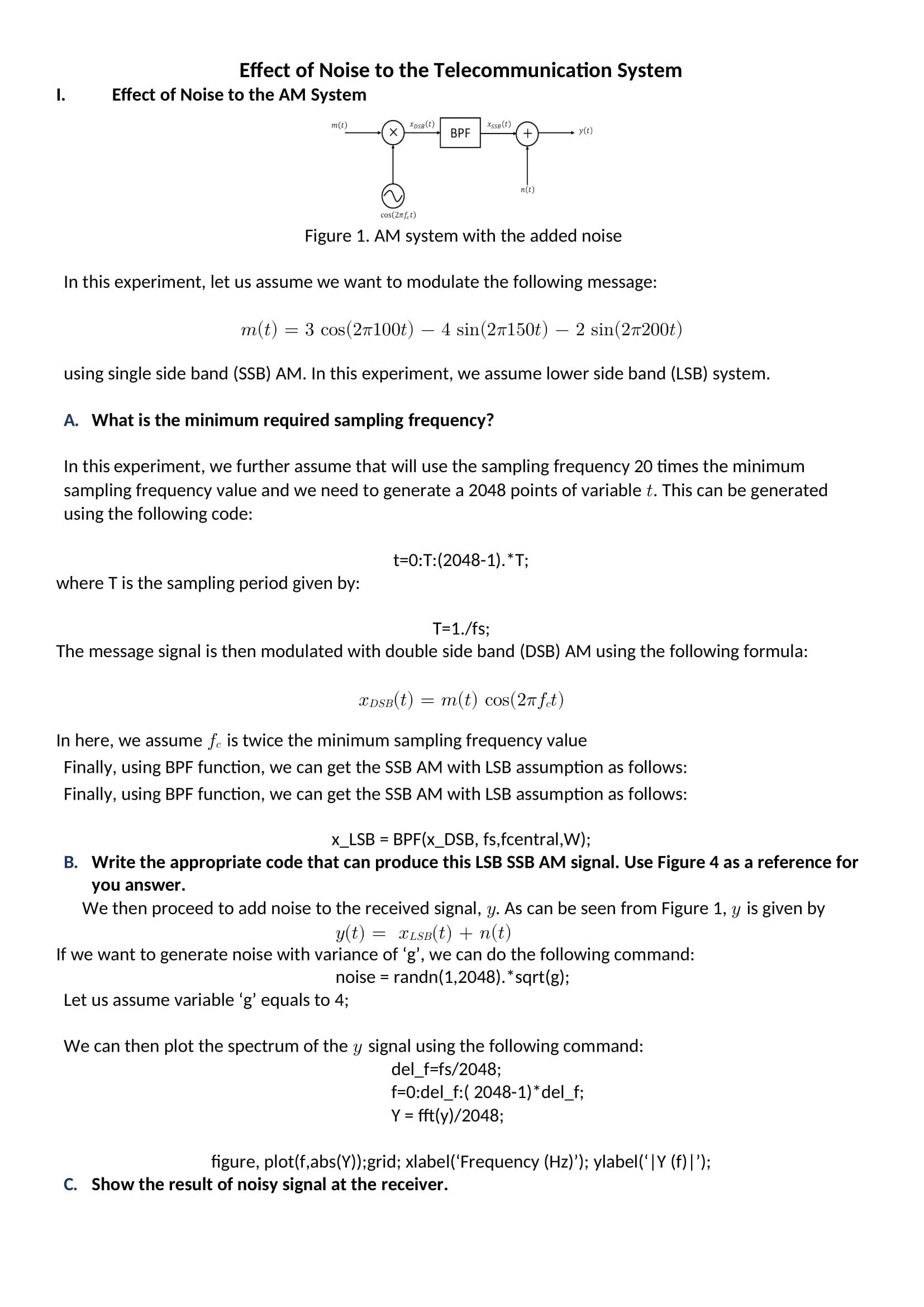Question
Please help me complete the practicum report above. The practicum report above is about the Effect of Noise to the Telecommunication System in the Telecommunication


Please help me complete the practicum report above. The practicum report above is about the Effect of Noise to the Telecommunication System in the Telecommunication System course by using the Matlab application to code and also be able to answer all the questions above. Note, the plot of the image does not need to be attached to the answer column, only the matlab coding and the answers to questions A, B, C, D, E, F, G.
The questions of lab report above is A. What is the minimum required sampling frequency? B. Write the appropriate code that can produce this LSB SSB AM signal. Use Figure 4 as a reference for you answer. C. Show the result of noisy signal at the receiver. D. Think about the appropriate value of f_cutoff and write the appropriate command to get the original message back. E. Plot the frequency domain and time domain of the detected signal. F. Show the appropriate command that can perform this noise-cleaning even further. G. Comment on the resulting time domain and frequency domain signals of m_d and m_clean
I. Effect of Noise to the Telecommunication System Effect of Noise to the AM System m(t) where T is the sampling period given by: X XDSB (t) BPF XSSB (t) Let us assume variable 'g' equals to 4; + cos(2nfet) Figure 1. AM system with the added noise In this experiment, let us assume we want to modulate the following message: m(t) = 3 cos (27100t) 4 sin(27150t) 2 sin(27200t) using single side band (SSB) AM. In this experiment, we assume lower side band (LSB) system. A. What is the minimum required sampling frequency? In this experiment, we further assume that will use the sampling frequency 20 times the minimum sampling frequency value and we need to generate a 2048 points of variable t. This can be generated using the following code: n(t) t=0:T: (2048-1). *T; y(t) - T=1./fs; The message signal is then modulated with double side band (DSB) AM using the following formula: XDSB(t) = m(t) cos(2 fet) In here, we assume fe is twice the minimum sampling frequency value Finally, using BPF function, we can get the SSB AM with LSB assumption as follows: Finally, using BPF function, we can get the SSB AM with LSB assumption as follows: C. Show the result of noisy signal at the receiver. x_LSB = BPF(x_DSB, fs,fcentral,W); B. Write the appropriate code that can produce this LSB SSB AM signal. Use Figure 4 as a reference for you answer. We then proceed to add noise to the received signal, y. As can be seen from Figure 1, y is given by y(t) = xLSB(t) + n(t) If we want to generate noise with variance of 'g', we can do the following command: noise randn(1,2048). *sqrt(g); We can then plot the spectrum of the y signal using the following command: del_f=fs/2048; f=0:del_f:( 2048-1)*del_f; Y = fft(y)/2048; figure, plot(f,abs(Y)); grid; xlabel('Frequency (Hz)'); ylabel('Y (f)|');
Step by Step Solution
3.67 Rating (180 Votes )
There are 3 Steps involved in it
Step: 1

Get Instant Access to Expert-Tailored Solutions
See step-by-step solutions with expert insights and AI powered tools for academic success
Step: 2

Step: 3

Ace Your Homework with AI
Get the answers you need in no time with our AI-driven, step-by-step assistance
Get Started


